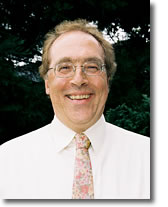Reprinted from the Aug/Sept 2002 Townsend Letter with permission
Electron Beam Tomography (EBT) is a relatively new technique performed to evaluate the status of coronary artery disease. Available at an increasing number of university hospitals or affiliate institutions as well as at private, commercial radiology centers, EBT affords a relatively inexpensive and non-invasive means to assess calcification in the coronary arteries. Given the fact that atherosclerotic lesions contain at least 10% calcification and usually a greater percentage, EBT offers a definite alternative to a painful and sometimes risky angiogram procedure. Other techniques such as stress treadmill testing of the heart by electrocardiogram, thallium scan and ultrasound do not specify calcification of coronary arteries. While the cardiology community has reluctantly begun to consider this evaluation process, it offers the advantage that an individual can elect to obtain this screening without a doctor’s prescription; however, this generally means that health insurance will not reimburse it. (This was the case also when CT scans were introduced 2 decades earlier.) For many physicians involved in preventive and alternative medicine, EBT is an excellent screening procedure for younger men and middle-aged women to assess coronary artery disease risk.
It has been generally understood by cardiologists that atherosclerotic plaque formation is irreversible except in certain unusual circumstances. Well organized fibrotic plaque in the coronary arteries has been recognized to be a serious, life-threatening risk for myocardial infarction and other cardiac events. Although some reports were made in the last decade that lifestyle changes, dietary restriction and relaxation techniques were capable of reversing atherosclerotic disease (see work by Dean Ornish, MD), there has been little further confirmation of this work by other researchers. At some recent American Heart Association meetings, preliminary work has suggested that certain cholesterol-lowering agents, specifically “statin” drugs, have demonstrated some degree of atherosclerotic reversal. Nevertheless, these approaches remain preliminary. No medical treatments have been otherwise promising in reversing atherosclerotic heart disease. It has been the contention of chelation physicians that intravenous EDTA chelation has been effective in the treatment of atherosclerotic coronary artery disease. (A bibliography of references on the effectiveness of IV. EDTA chelation is available from the American College for the Advancement of Medicine (ACAM), phone 949-583-7666, fax 949-455-9679, web site: www.acam.org, email: acam@acam.org.)
At the American Biologics symposium in June, 2002 in Rhodes, Greece, H. Richard Casdorph, MD, PhD gave a presentation reviewing strategies employing nutritional and biochemical techniques to prevent heart disease. His presentation included data using EBT measurements on patients receiving intravenous EDTA chelation therapy. Patients under review were studied prior to receiving EDTA chelation; repeat EBT studies were made after receiving chelation treatment. The calcification scores were significantly reduced in post-chelation EBT studies. While this study is preliminary, it does provide evidence by objective measurement that intravenous EDTA chelation has a role in the reversal of atherosclerotic plaque. Dr. Casdorph’s work reminds us that the effectiveness of chelation in atherosclerosis may be questioned but it cannot be editorialized that no evidence exists for chelation effectiveness. We now have an excellent non-invasive and inexpensive tool to assess effectiveness of chelation therapy.
